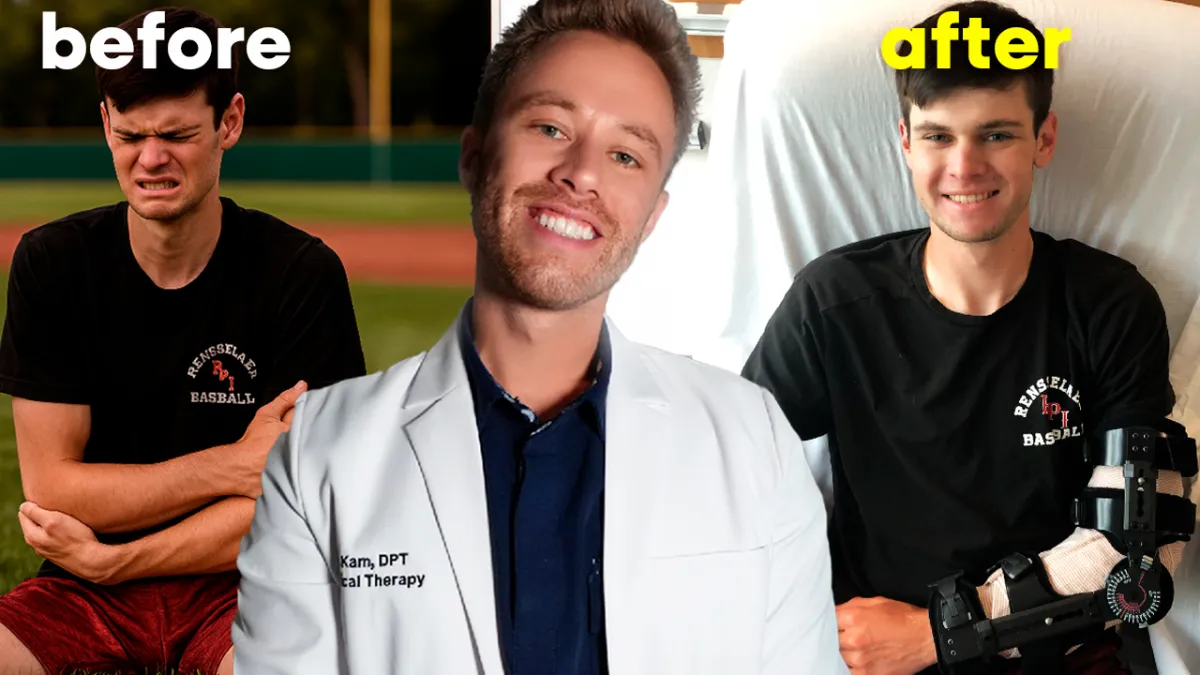
Why Tommy John Surgery Is Common In Baseball Pitchers
Why the UCL Fails and Leads to Tommy John Surgery
Imagine a ligament in your elbow, no thicker than three credit cards, trying to handle the force of a 100 mph fastball. That ligament is the ulnar collateral ligament (UCL). And for many pitchers, it eventually gives way — often ending with Tommy John surgery.
I’m Dr. Kam, a fellowship-trained sports and orthopedic physical therapist, and I’ve worked with countless baseball athletes who face UCL injuries. In this article, I’ll break down why the UCL is so vulnerable, what actually happens when it fails, and why Tommy John surgery has become so common.
The UCL: Small But Essential for Pitchers
The UCL is a triangular band of connective tissue that connects the humerus (upper arm bone) to the ulna (forearm bone). It sits on the inside of the elbow and is the primary stabilizer during a pitch.
Here’s the problem: it’s tiny. The ligament is only 1.5–2 cm long and about as wide as a pencil eraser. Despite this, it has to handle the enormous torque created by a pitch.
Why the UCL Can’t Keep Up with Pitching Forces
The UCL can withstand around 32 newton-meters of torque. But a single pitch can put up to 50 newton-meters of torque on it. That’s a mismatch.
Every throw adds a little more stress. Microtears form, and over time, they weaken the ligament. When pitchers are consistently throwing 90–95+ mph, the UCL simply can’t recover fast enough.
Blood Supply: The Hidden Weakness of the UCL
Another reason the UCL breaks down is its poor blood supply. The distal portion (closer to the wrist) doesn’t get enough blood flow to repair itself well.
That’s why athletes with a proximal UCL sprain (closer to the shoulder) often do better with rehab and physical therapy, while distal tears are harder to heal without surgery.
Why Tommy John Surgery Becomes Necessary
When the UCL is too damaged, Tommy John surgery becomes the solution. The procedure involves replacing the torn ligament with a tendon graft, often taken from the wrist, hamstring, or adductor.
Recovery isn’t quick. It can take 12–18 months of rehab before a pitcher is back to competitive throwing. But for many, it’s the only way to save their career.
The Bigger Picture for Pitchers and the UCL
The UCL may be small, but it has an enormous impact on a pitcher’s future. With pitchers throwing harder than ever, the stress on this ligament isn’t going away. That’s why proper training, recovery, and arm care strategies must be part of every pitcher’s routine.
What This Means for Baseball Players Today
To recap, why does the UCL so often fail, leading to Tommy John surgery? It’s a combination of extreme pitching forces, poor healing capacity, and cumulative damage that make the UCL vulnerable. For many pitchers, surgery is the only path back.
I’m Dr. Kam, a double-fellowship trained sports and orthopedic physical therapist. My focus is keeping baseball players throwing hard — and staying
If you found this breakdown helpful, check out these articles or apply to work with me 1-on-1:
